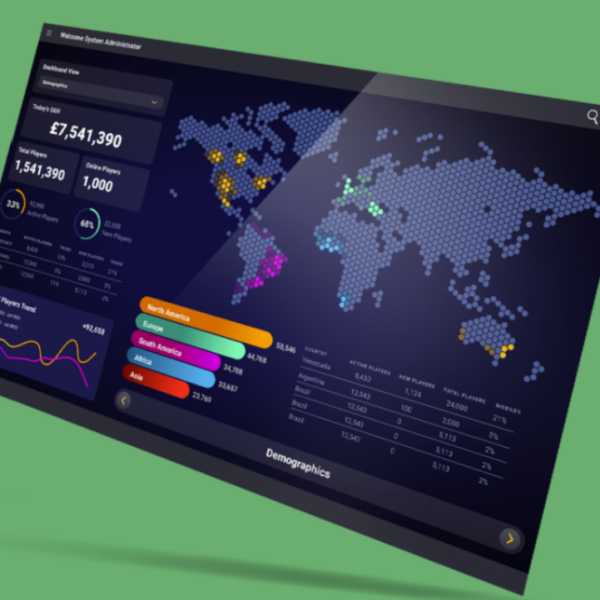In the rapidly evolving iGaming industry landscape, staying ahead of the competition requires a keen focus on user experience. Real-time analytics has emerged as a game-changer, providing Operators with invaluable insights into user behaviour, preferences, and performance. By harnessing the power of real-time data, Operators can create a more personalised and engaging experience for players. This ultimately drives customer satisfaction and loyalty.
Pretty Technical harness the power of real-time analytics in our player account management platform, Mikado. Using real-time analytics enables us to track and understand users’ behaviour. This provides insights into things such as; their most played games, marketing preferences and financial trends. It also allows us to detect suspicious behaviour, triggering preventive measures such as account status changes.
Real-time analytics involves the instantaneous processing and analysis of data as it’s generated. For Operators, this includes the continuous monitoring and interpreting of user interactions, betting patterns, and other relevant metrics in real-time. Traditional analytics often rely on historical data, but real-time analytics empowers operators to make informed decisions on-the-fly.
Some of the benefits of Real-Time Analytics for Operators are:
Personalising User Experiences:
Real-time analytics feeds iGaming platforms with data on individual user preferences and behaviours as they happen. This data enables platforms to serve personalised recommendations, bonuses, and promotions tailored to each player’s unique profile. This not only enhances the overall user experience but also increases the likelihood of user engagement and retention.
Fraud Detection and Security:
The iGaming industry deals with an almost constant stream of fraudulent activity. Real-time analytics is an essential tool in identifying irregularities in user behaviour, transactions and activities as they occur. Implementing advanced fraud detection algorithms enables operators to safeguard both their platform and users, fostering a secure and trustworthy environment.
Dynamic Odds Adjustment:
Real-time analytics empower Operators to dynamically adjust odds based on factors such as player performance, game events, and market trends. This ensures that the odds accurately reflect the current state of play, delivering a fair competitive gaming experience. Responsive odds adjustments provide a more dynamic, engaging and attractive experience for users.
Live Event Optimisation:
For sports betting platforms, real-time analytics are crucial in meeting player expectations during live events. An immersive and exciting betting experience relies on providing up-to-the-minute data on player statistics, team performance, and in-game events.
Responsive Customer Support:
The use cases extend beyond user behaviour and game performance to customer support interactions. Identifying trends in user queries and concerns, enables Operators to proactively address issues and improve customer support in real time. This responsiveness can go a long way to enhancing overall customer satisfaction.
Predictive Analytics for User Retention:
By analysing real-time data on player behaviour, operators can implement predictive analytics models to identify users at risk of churn. This enables targeted retention strategies, such as personalised promotions or loyalty programs to be triggered, reengaging users and promoting loyalty to the platform.
Technically Bringing Real-Time-Analytics to Life
To breathe life into a real-time analytics project, requires robust technical solutions. Data capture will likely involve Apache Kafka (read more in our Tech Insights article) or Amazon Kinesis wrangling streaming data from various sources. Apache Spark, Apache Flink, or Kafka Streams are good options for rapid data processing. Whilst storing your valuable insights might require a time-series database like InfluxDB or a real-time-friendly option like Druid. Finally, Tableau, Power BI, or Grafana can translate your data into interactive dashboards, enabling clear data visualisation in real-time.
Having the information available is of course only one part of the equation, the other vital element for realising value from real-time analytics is making sure you have the people and processes in place to ‘act’ promptly on the real-time information.
As the industry continues to evolve, embracing real-time analytics to respond dynamically to user behaviour and environmental factors will be essential. To achieve and maintain competitive advantage will require the use of technology that is at the forefront of innovation. If you’d like to explore this further, simply contact us or email [email protected].

